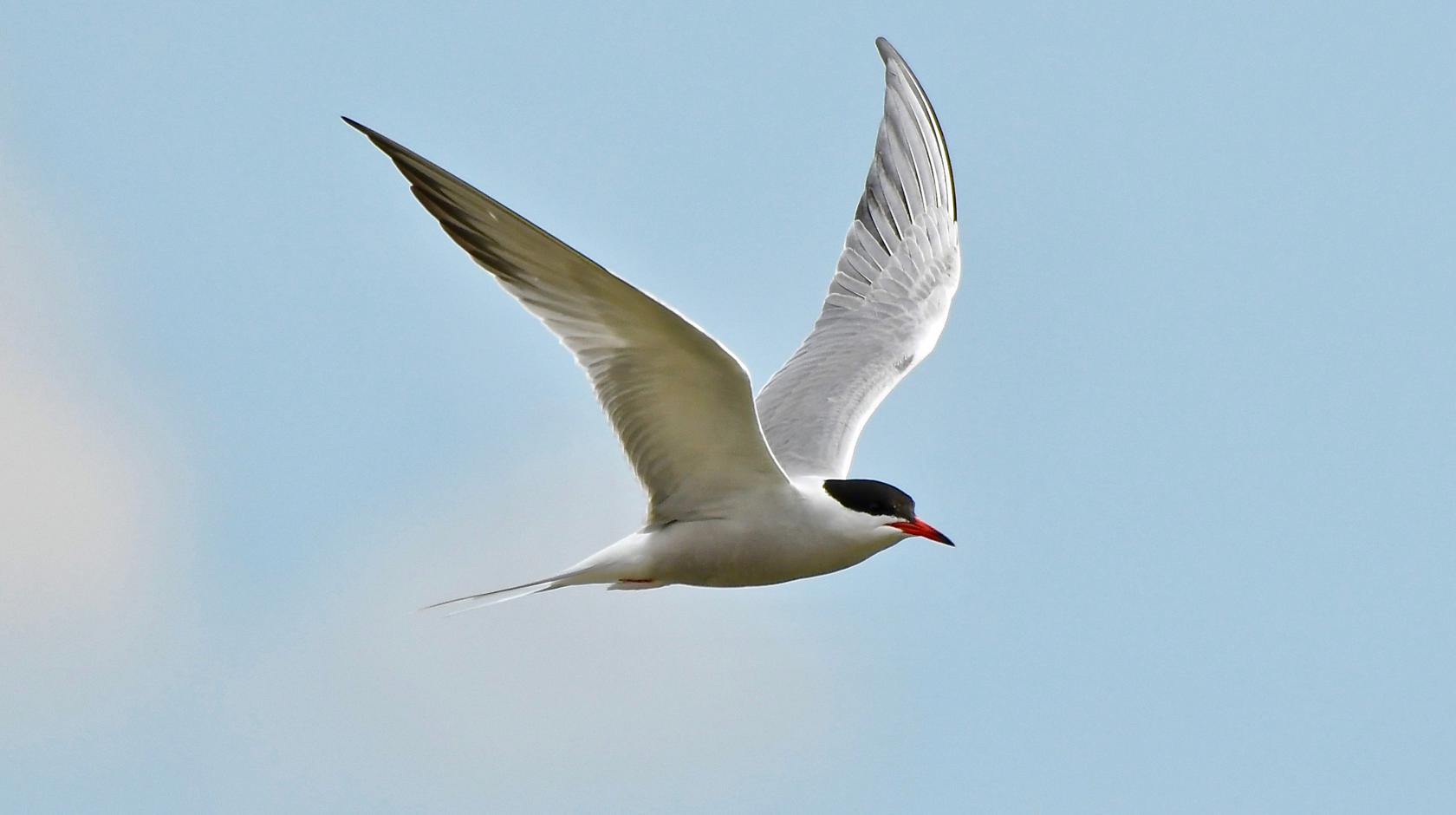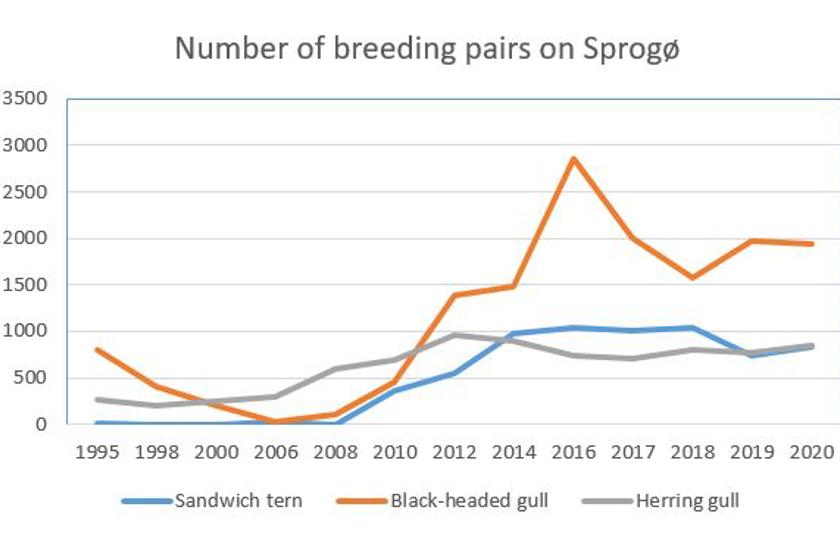
Birds at Sprogø
Sprogø offers a variety of bird habitats. The hillsides are home to sand martins and black guillemots while house martins nest under the eaves of the former women's institution. The reef provides a habitat for seagulls and terns and the tidal flats for sandpipers. The diverse undergrowth and tree covered part of Fyrbakken attracts small birds.
Vital breeding ground for seagulls and terns
When crossing Sprogø by train, it is immediately apparent that seagulls dominate nature on Sprogø. The island is an important breeding ground for almost all species of seagulls and terns although it is the common gull which particularly characterises the island. Nevertheless, it is the black-headed gulls that hold the key to etablising a large and stabel colony of gulls and terns. Despite being the smallest of the gulls, the black-headed gull is highly agressive when defending its nest. As a consequence, if black-headed gulls become well established on the island, they can offer protection to other colonies of breeding birds in that they keep uninvited guests at bay.
It is tempting to believe that if the individual species of tern or gull stick together in a colony, this would offer sufficent protection. This, however, is not the case. Not until the colony comprises several different species and a large number of individuals does it offer a common defence against herring gulls, crows and foxes. This is where black-headed gulls play a key role. And there are many, at least 500 pairs. Once these have established a colony the common terns join them, building their nests in close vicinity to the black-headed gulls. Later the sandwich terns and little terns expand the territory until, finally, they are joined by various waders such as avocets, lapwings and redshank.
Breeding pairs on Sprogø
